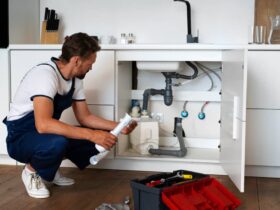If you have a furnace or a heating system in your home, you must do some important maintenance tasks to keep it in good shape. These include checking the boiler pressure and cleaning the evaporator and condenser coils. You could hire an HVAC contractor, like the experts at Wagner Mechanical to examine your system. There are also several things that you can do to prevent problems with your system.
Checking the Boiler Pressure Regularly
A low boiler pressure can mean trouble heating your home. Sometimes, the boiler will not heat or might even stop working. Checking the pressure of the boiler can be an easy 60-second fix. The pressure gauge on the boiler should read between 1.5 bars.
Low pressure may mean the pressure relief valve is clogged or failed. If this is the case, you’ll need to contact a Gas Safe Engineer for diagnosis. Alternatively, the boiler may be faulty, and you need to top it up. If you’re unsure, you can call a plumber. While many plumbers will charge by the hour, check their credentials and registration under the financial conduct authority.
High pressure can also cause a boiler to shut down. While it’s unlikely to be harmful, it could be a problem that causes a power outage. A pressure relief valve should automatically shut off the boiler if it senses too much pressure. If it doesn’t, the boiler may also shut down the power. Although a power outage can be a hassle, it is better to be safe than sorry if your heating system isn’t working properly.
Cleaning the Evaporator Coils
Keeping the evaporator coils of sizing your heating system in tip-top shape can significantly improve its efficiency. Dirty coils can lead to higher utility bills, decreased heat transfer, and wear and tear on your system. They also cause the air in your home to become warm when it should be cold. The evaporator coil is located on the indoor unit of your heating or cooling system, while the condenser coil is located on the outdoor unit. These coils are made of copper and surrounded by aluminum fins. Cleaning the coils with a soft brush can remove accumulated dirt and debris, but you should follow the manufacturer’s instructions.
Scrubbing the coils is an effective way to remove light dirt. The cleaning solution should be alkaline, which will help loosen the accumulated dirt and grime on the coils. Use a soft brush to scrub the coils, as hard bristles may damage the fins of the coils.
Cleaning the Condenser Coils
If your heating system has condenser coils, it’s time to clean them. The process is simple and involves a few steps. First, get a garden hose and wet the coils gently with it. Next, spray the coils with coil cleaner. Let it sit for five to 10 minutes, then rinse it with water. Make sure to move the hose in slow motion to avoid damaging the cooling fins.
Cleaning the coils should be done at least once a year. Dirty coils put extra strain on your HVAC system. They can reduce the cooling capacity of your system by as much as 40% and decrease energy efficiency by as much as 60%. In addition, dirty coils can cause health issues.
Cleaning the Ducts
Before cleaning your heating system’s ducts, ensure you know what you’re doing. If you need to be a trained professional, you may cause more harm than good by using a faulty vacuum collection system, which can release more pollutants into the air. Besides, a shoddy cleaning job can damage your heating and cooling system, forcing you to pay for costly repairs or replacements.
Before cleaning the ducts, you should seal them up and make sure they’re properly sealed. If you’re building a new house, duct sealing is especially important since construction debris tends to accumulate. Pests often leave traces of their existence, including droppings and carcasses, which can cause ill effects if released into the air. Therefore, it’s important to have your ducts cleaned regularly.










